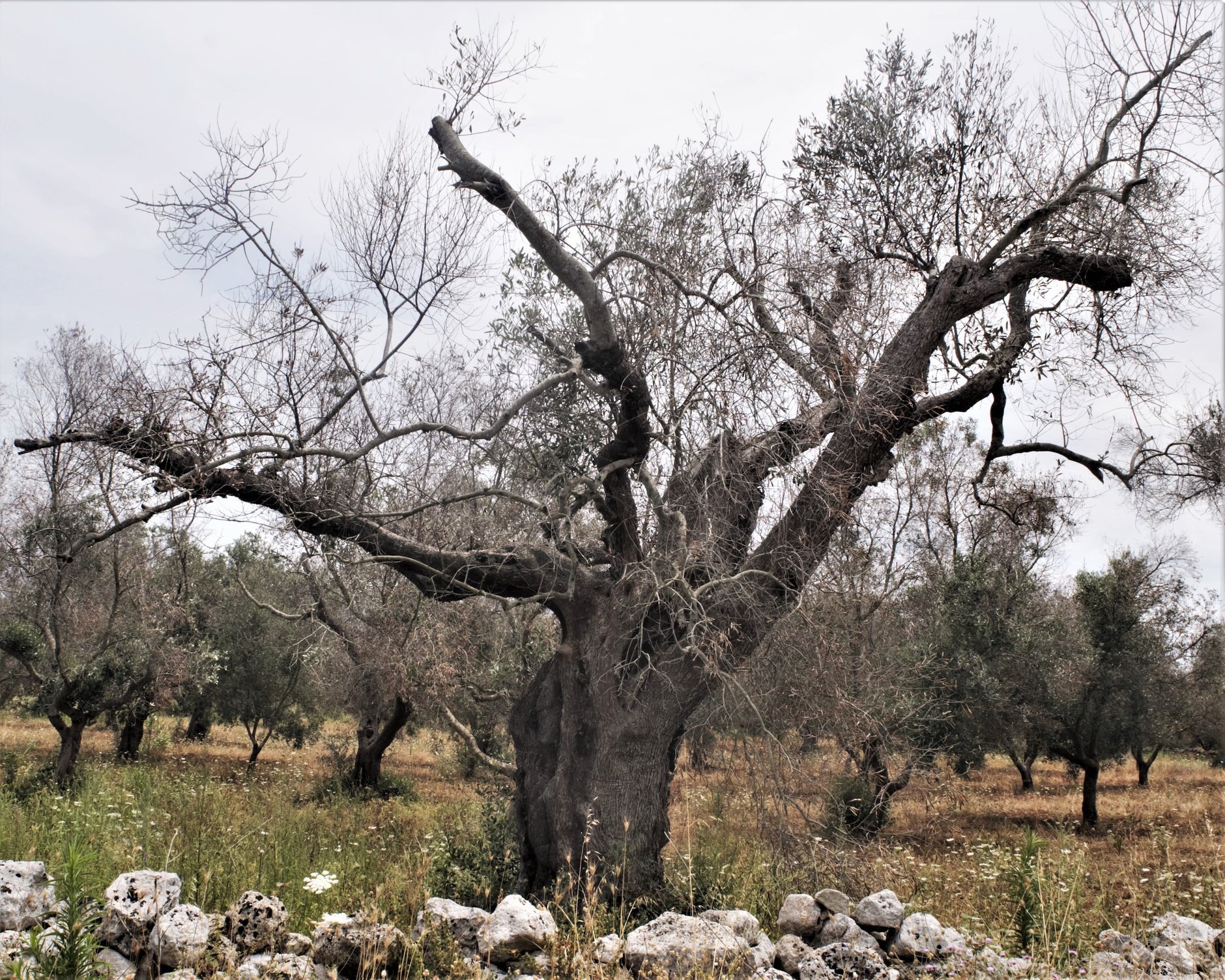SAN DONACI, Italy (CN) — The vast expanses of olive groves in Puglia's Salento region were a sad, sickening sight. Mile after mile, nearly every olive tree showed the telltale signs of sickness: large patches of dead brown leaves linked to a devastating plant disease invading the region.
Two years later, it's gone from bad to catastrophic: Now, instead of clumps of brown leaves everywhere, entire groves of olive trees are leafless and silent, deathly. Nausea may be the best word to describe the sensation the dead groves provoke.
“What is there to say?” an aging sun-darkened farmer in San Donaci said, looking at his gray and leafless olive trees. “No hope.”
He shook his head and went back to working in his vegetable garden under the summer sun. At least his vegetables were growing.
San Donaci, a farming town in the flat Salento region that makes up the bootheel of Italy, offers a dire warning to the rest of Europe about the threat posed by Xylella fastidiosa, a deadly plant bacterium from the Americas now invading Europe. The disease is spread by common insects that feed on a tree's sap.
With no sure protection against the disease available, iconic olive groves across the Mediterranean basin face a similar fate. The disease is already attacking olives in Corsica, Spain's Balearic islands and southern France. The bacterium, which causes Pierce's disease of grapevines in North America, is considered one of the world's most pernicious agricultural threats because it can infect and kill a wide variety of plants. For example, a strain of Xylella has been attacking California's vineyards for years and another strain is killing almonds in Spain.
The bacterium's presence in Puglia's olive trees was first announced in 2013. Scientists said it likely entered Europe through the global trade in exotic plants.After its discovery, alarm bells rang out: The pathogen, European and Italian officials said, had to be stopped.
Emergency measures put into place were drastic: Infected trees and other trees within a large radius were ordered destroyed. But orders to cut down and uproot ancient olive trees were met with anger and alarm. The idea of ripping out precious olive trees was unthinkable for many.
At the same time, doubts about the exact cause of the olive tree sickness sprang up, too, with some scientists saying the new disease was wreaking such havoc because of years of overuse of herbicides and pesticides in Salento's olive groves. More sinister theories circulated too linking the disease to nefarious plots hatched by the mafia, land speculators and corrupt scientists.
Farmers resisted the orders to destroy their trees and staged protests. Environmentalists joined the fight, arguing organic treatments and ending the use of chemicals would cure the sick trees. Many politicians backed the resistance, and Italian prosecutors added to the confusion by opening an investigation into the scientists who first identified Xylella as the cause of the sick trees.
Seven years later, the Salento is a disaster zone where every faction in this acrimonious debate seems to be a loser.

Farmers who resisted cutting down their trees now own trees that don't bear fruit. The only sign of life on most trees are green shoots rising from the trunk. But even these shoots eventually may become infected and die.
Scientists and government officials who advocated the culling of infected trees and other containment measures, such as grass mowing and tilling to contain bugs that spread the bacterium, can't claim much success either. Despite wide-scale containment efforts, the disease has spread beyond Salento and continues to march north.
Farmers have good reason to be confused about what they should do.












